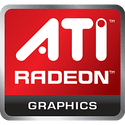
AMD Announces Ryzen 8000G Series Desktop APUs, Select Models Feature Ryzen AI
AMD today announced the Ryzen 8000G line of desktop APUs. These come in the Socket AM5 package, and are supported by all motherboards based on the AMD X670/E, B650/E, and A620 chipsets, with some requiring UEFI firmware updates. Since USB BIOS Flashback is standard issue on AMD motherboards, this should be no problem. With Ryzen 7000 series "Raphael" desktop processors that debut the "Zen 4" microarchitecture, AMD had standardized integrated graphics, however, the iGPU for these are just enough for desktop/productivity workloads, offering comparable performance to the iGPUs of Intel 13th Gen Core desktop processors. AMD doesn't consider Ryzen 7000 chips as APUs for this reason. An APU has to be a processor with powerful integrated graphics that can offer entry-level gaming, high-res content consumption, or multi-monitor productivity, and "Raphael" isn't it. Enter the Ryzen 8000G series.
The AMD Ryzen 8000G series debuts four APU models, the Ryzen 7 8700G, the Ryzen 5 8600G, the Ryzen 5 8500G, and the Ryzen 3 8300G. The 8700G and 8600G are based on the 4 nm "Hawk Point" silicon, feature Ryzen AI, and are the first desktop processors to feature an NPU (neural processing unit). The 8500G and 8300G are based on the 4 nm "Phoenix 2" silicon. The Ryzen 7 8700G leads the pack, and is a maxed out implementation of "Hawk Point," featuring an 8-core/16-thread CPU based on the "Zen 4" microarchitecture, the full Radeon 780M integrated graphics implementation with 12 RDNA3 compute units; and the Ryzen AI XDNA NPU. The processor has a combined AI throughput of 39 TOPS, with 16 TOPS from the NPU. For reference, an Intel Core Ultra 7 165H "Meteor Lake" mobile processor with its AI Boost NPU, has a combined AI throughput of 34 TOPS.
The AMD Ryzen 8000G series debuts four APU models, the Ryzen 7 8700G, the Ryzen 5 8600G, the Ryzen 5 8500G, and the Ryzen 3 8300G. The 8700G and 8600G are based on the 4 nm "Hawk Point" silicon, feature Ryzen AI, and are the first desktop processors to feature an NPU (neural processing unit). The 8500G and 8300G are based on the 4 nm "Phoenix 2" silicon. The Ryzen 7 8700G leads the pack, and is a maxed out implementation of "Hawk Point," featuring an 8-core/16-thread CPU based on the "Zen 4" microarchitecture, the full Radeon 780M integrated graphics implementation with 12 RDNA3 compute units; and the Ryzen AI XDNA NPU. The processor has a combined AI throughput of 39 TOPS, with 16 TOPS from the NPU. For reference, an Intel Core Ultra 7 165H "Meteor Lake" mobile processor with its AI Boost NPU, has a combined AI throughput of 34 TOPS.




















